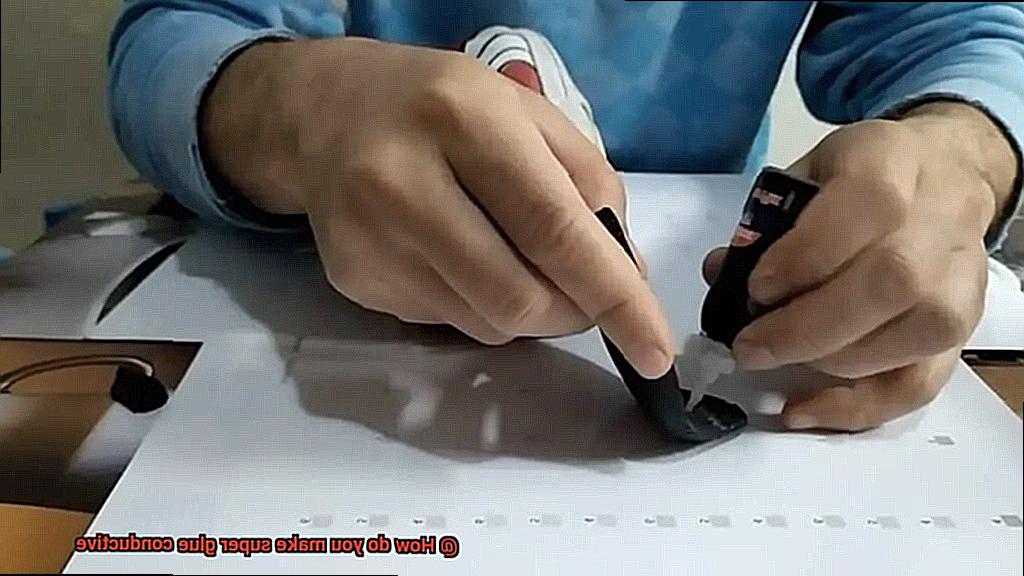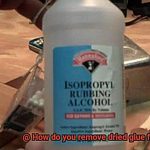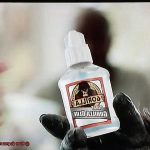Imagine turning a simple tube of super glue into an electric conductor, bridging the gap between science and innovation. Today, we’re taking you on a journey to uncover the secrets behind making super glue conductive.
In this captivating blog post, we’ll explore the world of conductive materials, unravel the intricate process, and equip you with a step-by-step guide to creating your own electrifying adhesive. So buckle up and get ready for an exhilarating adventure into electrical engineering and DIY brilliance.
Join us as we dive into the enchanting realm of transforming everyday materials into remarkable conductors using just a bit of super glue and a whole lot of curiosity. Prepare yourself for endless possibilities and witness the marriage of science and creativity like never before. Let’s embark on this electrifying escapade together.
What is Conductivity?
Contents
- 1 What is Conductivity?
- 2 Adding Metallic Powders to Super Glue
- 3 Using Conductive Ink or Paint with Super Glue
- 4 Combining Super Glue with Conductive Tapes or Films
- 5 Considerations for Making Super Glue Conductive
- 5.1 Consideration #1: Selecting the Conductive Material:
- 5.2 Consideration #2: Controlling the Concentration:
- 5.3 Consideration #3: Thorough Mixing Process:
- 5.4 Consideration #4: Testing and Evaluation:
- 5.5 Consideration #5: Surface Preparation:
- 5.6 Consideration #6: Safety Precautions:
- 5.7 Consideration #7: Commercially Available Alternatives:
- 6 Finding the Right Balance of Conductive Material and Super Glue
- 6.1 Harnessing the Power of Conductive Materials:
- 6.2 Choosing Wisely: The Right Conductive Material:
- 6.3 The Art of Balance: Finding the Sweet Spot:
- 6.4 Mixing Techniques: Tailored Approaches:
- 6.5 Viscosity and Adhesive Strength: A Delicate Dance:
- 6.6 Applications and Advantages: Empowering Innovations:
- 7 Advantages of Making Super Glue Conductive
- 8 Applications of Conductive Super Glue
- 9 Conclusion
Conductivity is a fundamental property that allows materials to transmit electric current. It is a concept that permeates our daily lives, from powering our homes to operating electronic devices. In this article, we will delve into the captivating world of conductivity, exploring its importance and the different types of materials it encompasses.
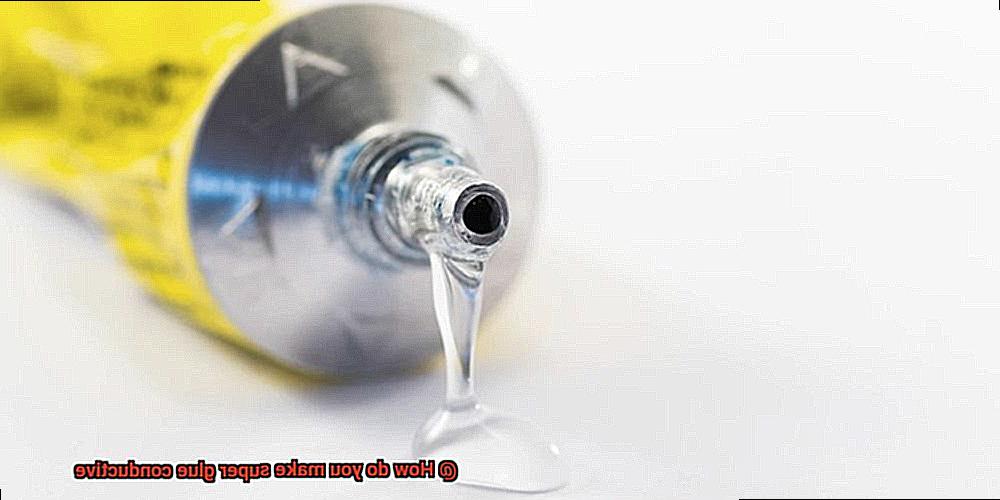
Understanding Conductivity:
Conductivity refers to a material’s ability to facilitate the flow of electric current. It is determined by the movement of electrically charged particles, such as electrons or ions, through a substance. Materials can be classified into three categories based on their conductivity: conductors, insulators, and semiconductors.
Conductors:
Conductors are materials that allow electric current to flow easily. They possess an abundance of free or loosely bound electrons that can move throughout the material when a voltage is applied. Metals, such as copper and silver, are excellent conductors due to their surplus of free electrons. These materials form efficient pathways for electric current and are widely used in electrical wiring and transmission lines.
Insulators:
Insulators are materials with low conductivity. They hinder the flow of electric current as they have few or no free electrons available for movement. Examples of insulators include rubber and plastic, which are widely used for electrical insulation. Insulators serve to protect us from electric shocks and prevent unwanted current leakage in various applications.
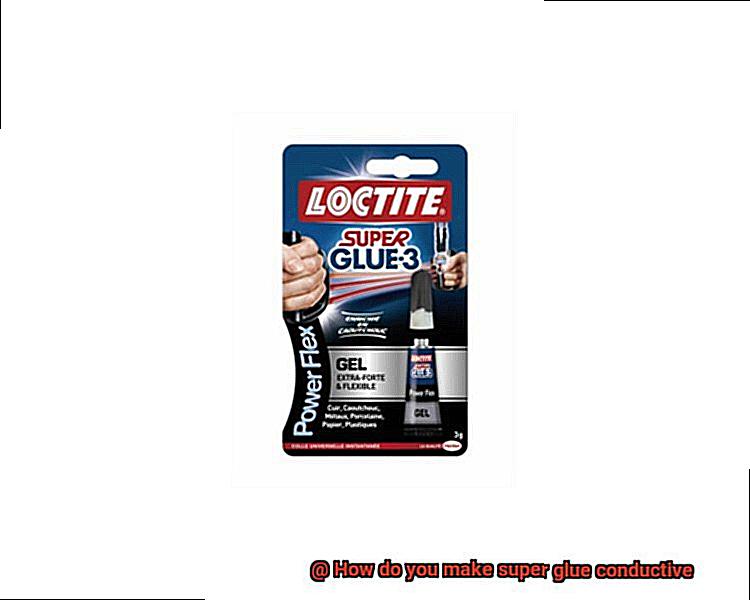
Semiconductors:
Semiconductors occupy a middle ground between conductors and insulators in terms of conductivity. Their conductivity can be modified by introducing impurities or changing temperature conditions. Semiconductors are fundamental components in electronic devices like transistors and diodes. Silicon is one of the most commonly used semiconducting materials in modern electronics.
Enhancing Conductivity: Making Super Glue Conductive
Super glue, a versatile adhesive, can be transformed into a conductor of electricity through various methods:
- Mixing Metallic Powders: Adding highly conductive metallic powders, such as silver or copper, into the super glue enhances its conductivity. These metals provide an efficient pathway for electric current, enabling the glue to conduct electricity.
- Using Conductive Ink or Paint: Mixing conductive ink or paint containing materials like carbon or graphite with super glue can make it conductive. The ink or paint is applied to the surface, and then the conductive super glue is applied on top, creating a conductive pathway. This method is often used in electronic circuitry and sensor applications.
- Combining with Conductive Tapes or Films: Applying conductive tapes or films made from materials like copper or aluminum to surfaces before using super glue creates a conductive bond. The adhesive properties of super glue ensure a strong connection between the glue and the tape or film, allowing for electrical connectivity.
Adding Metallic Powders to Super Glue
Prepare to be amazed, because by adding metallic powders to this adhesive wonder, you can transform it into a conductor that rivals the might of copper and silver. The fusion of metallic powders with super glue creates a composite material that not only binds things together but also allows for the free flow of electrical current.
So, how does this sorcery work? Metallic powders like copper and silver boast exceptional electrical conductivity. When these powders are blended with super glue, they act as conductive fillers, forging a pathway for electrical charge. The secret lies in ensuring that the metallic powders are evenly dispersed within the glue, guaranteeing consistent conductivity throughout.
To harness the power of conductive super glue, simply mix the metallic powders with the adhesive until you achieve a harmonious blend. Begin with modest amounts of powder and gradually add more if necessary. Beware, though, as excessive powder can tamper with the adhesive properties of the glue.
Once you possess your potent concoction, a world of possibilities opens up. This conductive super glue is particularly valuable in electronics, circuit board repair, and any DIY project involving conductive materials. Picture yourself creating conductive bonds between components with just a single drop of this extraordinary adhesive.
Using Conductive Ink or Paint with Super Glue
Prepare to have your mind blown by the incredible combination of conductive ink or paint with super glue. This dynamic duo has the power to take your projects to the next level, transforming super glue into a conductor that will electrify your creations.
Let’s dive into the magic behind this sorcery. Conductive ink or paint contains minuscule particles of silver, copper, or carbon that allow electricity to flow through them. When combined with super glue, they create a conductive adhesive that can be applied to various surfaces, forming electrical connections or circuits that will make sparks fly.
Now, let’s get down to the nitty-gritty of how to use this enchanting adhesive duo. First, apply a thin layer of super glue onto the surface you want to make conductive. You have the power to choose – use a brush, an applicator, or even a syringe for precision. Next, work your magic by applying a layer of conductive ink or paint on top of the super glue.
Make sure the conductive ink or paint fully covers and coats the super glue layer, creating a continuous and uniform coating. This is crucial for maximum conductivity and ensuring that your creations are truly electrifying. Once you’ve applied the ink or paint, let it dry or cure according to the manufacturer’s instructions. This will ensure a stable and reliable connection that will stand the test of time.
Now comes the thrilling part – utilizing your newfound conductive adhesive. Attach electronic components to surfaces with ease, create flexible circuits on unconventional materials, repair broken circuit traces like a pro, or even design custom electronic devices that defy convention. The possibilities are as endless as your imagination.
But remember, dear DIYers, that the conductivity of the adhesive may vary based on the type and concentration of conductive particles in the ink or paint. And don’t forget about external factors like temperature, humidity, and proper surface preparation, as they too can influence performance. Always follow the manufacturer’s guidelines for optimal results.
Combining Super Glue with Conductive Tapes or Films
Well, wonder no more. In this blog post, we will explore how to create electrical connections using the magical combination of super glue and conductive tapes or films. Get ready to witness the electrifying possibilities and take your DIY projects to a whole new level.
The Process:
To embark on this electrifying journey, gather your materials:
- Super glue
- Conductive tapes or films (preferably made of metals like copper or aluminum)
- The surface where you want to create electrical connections
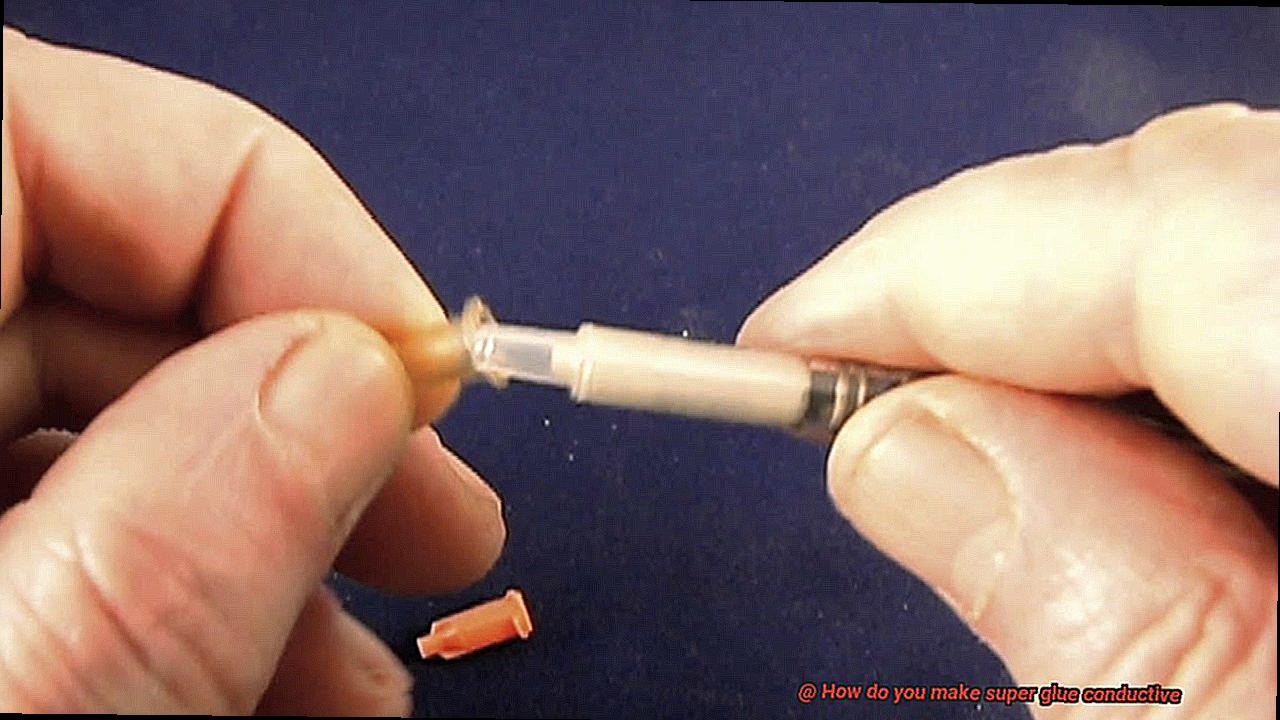
Next, follow these steps:
Apply a thin layer of super glue onto the desired surface. Remember, a little goes a long way, so don’t go overboard with the glue.
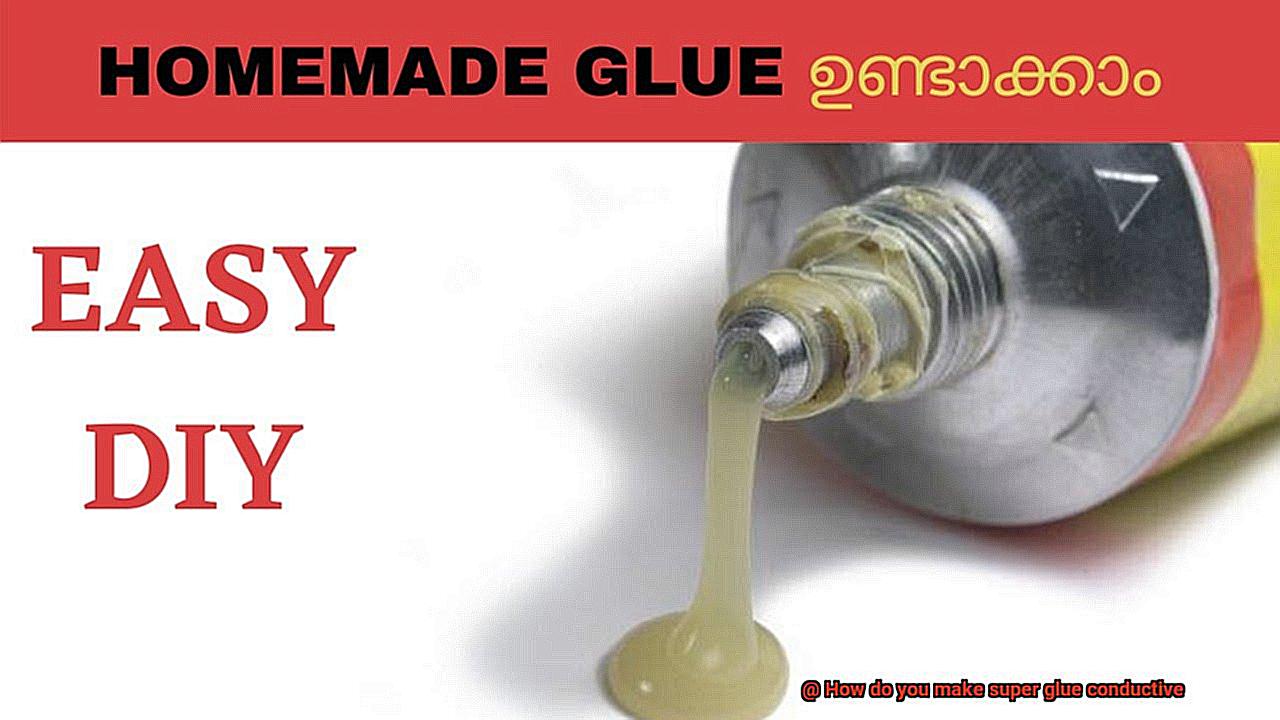
Carefully place the conductive tape or film on top of the super glue, ensuring good contact between the two materials. Take your time to align it properly and cover the desired area.
To ensure a strong bond, apply pressure or use clamps on the conductive tape or film. This enhances contact with the surface and improves conductivity.
Safety First:
Before you dive into this electrifying adventure, prioritize safety. Wear protective gloves and goggles since super glue can be harmful if it comes into contact with your skin or eyes. Also, ensure proper ventilation in your workspace to avoid inhaling any fumes.
The Potential:
Combining super glue with conductive tapes or films opens up a world of possibilities. Here are some potential applications:
- Design and assemble electronic circuits with flexibility.
- Repair damaged conductive traces on circuit boards.
- Create custom sensors and electrodes.
But Keep in Mind:
While this combination can be a practical solution, it’s important to note that the conductivity achieved may not be as efficient as with dedicated conductive adhesives or soldering methods. Factors like the type of super glue, the quality of the conductive material, and surface conditions can affect performance.
By combining super glue with conductive tapes or films, you can create electrical connections that will shock and awe your DIY projects. This powerful duo allows you to unleash your creativity and explore new frontiers in electronics. So, get your supplies together, follow the steps, and let your imagination run wild as you electrify your world.
Additional Information:
- Another method of making super glue conductive is by adding conductive particles or additives. These particles or additives are mixed with the super glue to enhance its conductivity. This method can provide better conductivity compared to using just the combination of super glue and conductive tapes or films.
- Conductive tapes or films made from copper or aluminum are popular choices due to their high conductivity. However, there are also conductive tapes or films available in other materials like silver or carbon.
- The surface where you apply the super glue and conductive tape or film should be clean and free from any oils or contaminants. Proper surface preparation ensures good adhesion and improves conductivity.
- It’s important to note that the electrical connections created using this method may not be as durable as soldered connections. The adhesive bond may weaken over time due to factors like temperature changes, humidity, or mechanical stress. Regular inspections and maintenance may be required to ensure the longevity of the connections.

Considerations for Making Super Glue Conductive
Imagine being able to create electrical connections with the humble super glue. In this article, we will delve into the fascinating world of making super glue conductive. We will discuss the considerations you need to take into account, from selecting the right materials to ensuring safety precautions. So, let’s dive in.
Consideration #1: Selecting the Conductive Material:
To make super glue conductive, you need to add a material with high electrical conductivity. Carbon-based materials like graphite powder or carbon nanotubes are commonly used for this purpose. These materials offer excellent conductivity and can be easily mixed with super glue.
Consideration #2: Controlling the Concentration:
Achieving the desired level of conductivity without compromising the adhesive properties of super glue requires careful control over the concentration of the conductive material. Too little may not provide sufficient conductivity, while too much could negatively impact the adhesive’s effectiveness.
Consideration #3: Thorough Mixing Process:
The success of making super glue conductive lies in the thorough and even dispersion of the conductive material within the adhesive. This ensures uniform conductivity throughout the glue, allowing for reliable electrical connections.
Consideration #4: Testing and Evaluation:
Modifying super glue to make it conductive may alter its original properties, such as curing time or strength. It is crucial to test and evaluate the conductive properties of your modified super glue before using it in specific applications. This step ensures that your adhesive meets your requirements.
Consideration #5: Surface Preparation:
Proper preparation of the surfaces to be bonded is essential for both adhesion and electrical conductivity. Cleaning and roughening the surfaces enhance their ability to bond and improve electrical contact between them.
Consideration #6: Safety Precautions:
Working with conductive super glue requires adhering to safety precautions. Some conductive materials may pose health risks if mishandled or inhaled. Adequate ventilation and the use of personal protective equipment, such as gloves and goggles, are essential during the preparation and application process.
Consideration #7: Commercially Available Alternatives:
If you prefer a hassle-free approach, there are commercially available conductive adhesives specifically designed for electronic applications. These adhesives are formulated with conductive fillers, ensuring reliable conductivity while maintaining good adhesive properties.
By considering these key factors, you can successfully make super glue conductive and unlock a world of possibilities for your DIY projects. Whether you’re designing circuits or repairing damaged traces, conductive super glue can be your new secret weapon.
So, unleash your creativity and let your imagination run wild with the electrifying combination of super glue and conductivity.
Finding the Right Balance of Conductive Material and Super Glue
Unlocking the true potential of super glue is an exciting prospect. Imagine a world where this remarkable adhesive not only bonds materials but also conducts electricity flawlessly. Today, we delve into the captivating realm of making super glue conductive and explore the critical importance of striking the right balance between conductive material and super glue. Join us as we dive deeper into this fascinating topic.
Harnessing the Power of Conductive Materials:
To transform super glue into a conductor, we must enlist the assistance of conductive materials. These materials empower the adhesive to carry electrical current, making it ideal for various electronic applications. Among the popular choices are silver, copper, carbon, and graphene, revered for their superb conductivity and other advantageous properties.
Choosing Wisely: The Right Conductive Material:
Selecting the appropriate conductive material is paramount in achieving optimal results. Silver boasts unparalleled conductivity but comes at a higher cost. Copper, on the other hand, offers good conductivity at a more affordable price point. Carbon-based materials, such as graphite or carbon nanotubes, provide both flexibility and conductivity. Carefully consider your specific application requirements when making this crucial choice.
The Art of Balance: Finding the Sweet Spot:
Creating conductive super glue involves finding the perfect equilibrium between the conductive material and the super glue itself. Excessive conductive material can render the adhesive overly thick and challenging to work with, while insufficient amounts may result in subpar conductivity. Striking the sweet spot ensures easy application and sufficient electrical flow.
Mixing Techniques: Tailored Approaches:
Different conductive materials necessitate specific mixing techniques. For silver flakes or particles, a simple mixture with super glue until homogeneity is achieved suffices. Carbon-based materials may require additional steps to ensure proper dispersion and bonding with super glue.
Viscosity and Adhesive Strength: A Delicate Dance:
It’s important to note that different brands or types of super glue can vary in viscosity and adhesive strength. These factors significantly impact the overall performance of the conductive adhesive. Experimentation may be necessary to find the ideal combination for your specific project, ensuring a harmonious marriage of properties.
Applications and Advantages: Empowering Innovations:
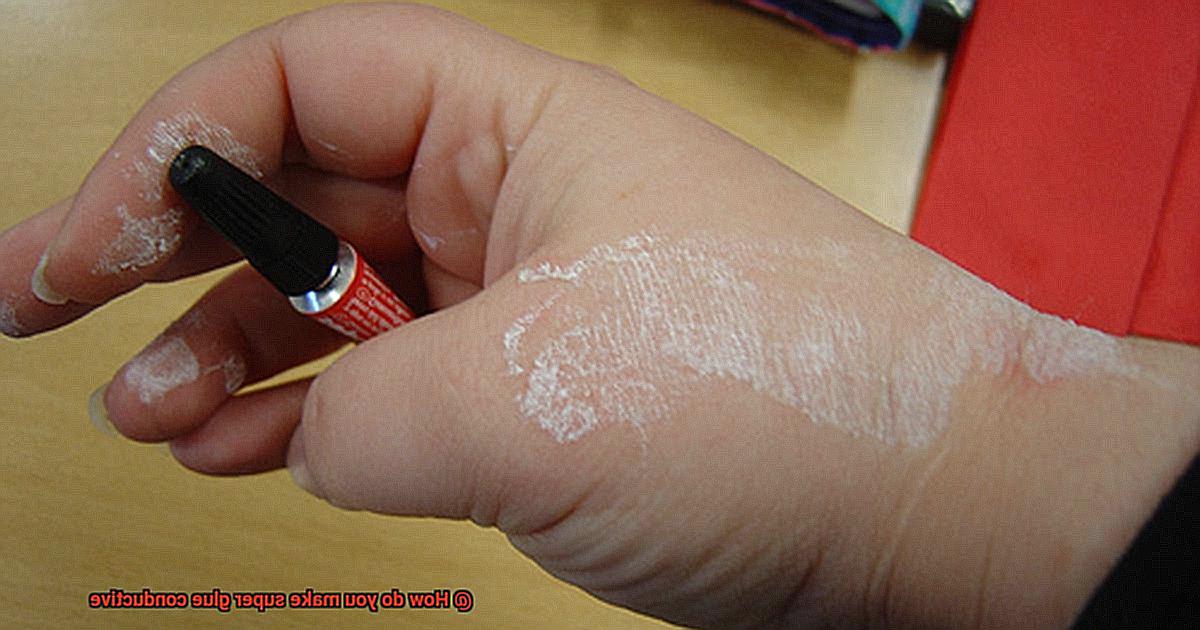
Conductive adhesives made with super glue find applications in a myriad of electronic projects. From bonding components to repairing circuit traces and creating flexible circuits, the right balance of conductive material and super glue guarantees both a strong bond and efficient electrical conductivity.
Advantages of Making Super Glue Conductive
The advantages of making super glue conductive are numerous and can revolutionize the world of adhesives. Firstly, conductive super glue allows for enhanced electrical connectivity. Traditional super glue is great at bonding materials together but falls short when it comes to conducting electricity. By modifying the composition of the glue to make it conductive, we can create reliable electrical connections between different components. This is particularly beneficial in the world of electronics and circuitry, where a solid electrical connection is crucial for smooth operation.
In addition to enhanced electrical connectivity, conductive super glue simplifies the assembly process. Instead of using separate methods or materials to establish electrical connections, you can directly apply conductive glue to join components together. This eliminates the need for additional soldering or wiring – just a simple dab of adhesive and voila. Talk about a time-saver.
Versatility is another advantage of conductive super glue. It can bond a wide range of materials, from metals to plastics, ceramics to fabrics. This opens up a world of possibilities in various industries like electronics, aerospace, automotive, and even medical devices. The applications are endless.
Durability is also a key advantage of conductive super glue. It not only provides electrical conductivity but also creates strong and long-lasting bonds. These bonds can withstand mechanical stress and environmental factors like temperature changes or moisture exposure. So rest assured that your glued components will stay put, no matter what.
Another significant advantage is cost-effectiveness. Making super glue conductive eliminates the need for additional components like solder or connectors, reducing material costs. Plus, the simplified assembly process saves on labor costs and increases production efficiency. It’s a win-win situation.
Furthermore, conductive super glue opens up possibilities for miniaturization. Its ability to create precise and reliable electrical connections in tight spaces allows for the design and production of smaller and more compact devices. So say hello to sleeker and more efficient gadgets.
Last but not least, conductive super glue is a game-changer when it comes to repair and maintenance. It can quickly fix electrical circuits or connections without the need for lengthy disassembly or component replacement. Just a quick dab of conductive glue, and you’re good to go. It’s a time and cost-saving solution.
Applications of Conductive Super Glue
In the world of adhesives, conductive super glue is a game-changer. With its ability to enhance electrical connectivity, simplify assembly processes, and offer versatility in material bonding, this adhesive has found its way into various industries. In this article, we will explore the wide-ranging applications of conductive super glue, from electronics and automotive to aerospace and medical fields.
Electronics Industry:
Conductive super glue plays a crucial role in the electronics industry. It bonds electrical components, creates connections on circuit boards and flexible substrates, and enhances the performance of electronic devices.
Automotive Industry:
Conductive super glue is a go-to solution for repairing electrical wiring and connecting sensors in the automotive sector. It ensures secure and efficient electrical connections by bonding wires together or attaching them to different components.
Aerospace Industry:
The aerospace industry relies on conductive super glue for bonding electrical components in aircraft and spacecraft. It connects wires, grounds systems, and secures sensitive electronic equipment, ensuring optimum performance in challenging environments.
Medical Applications:
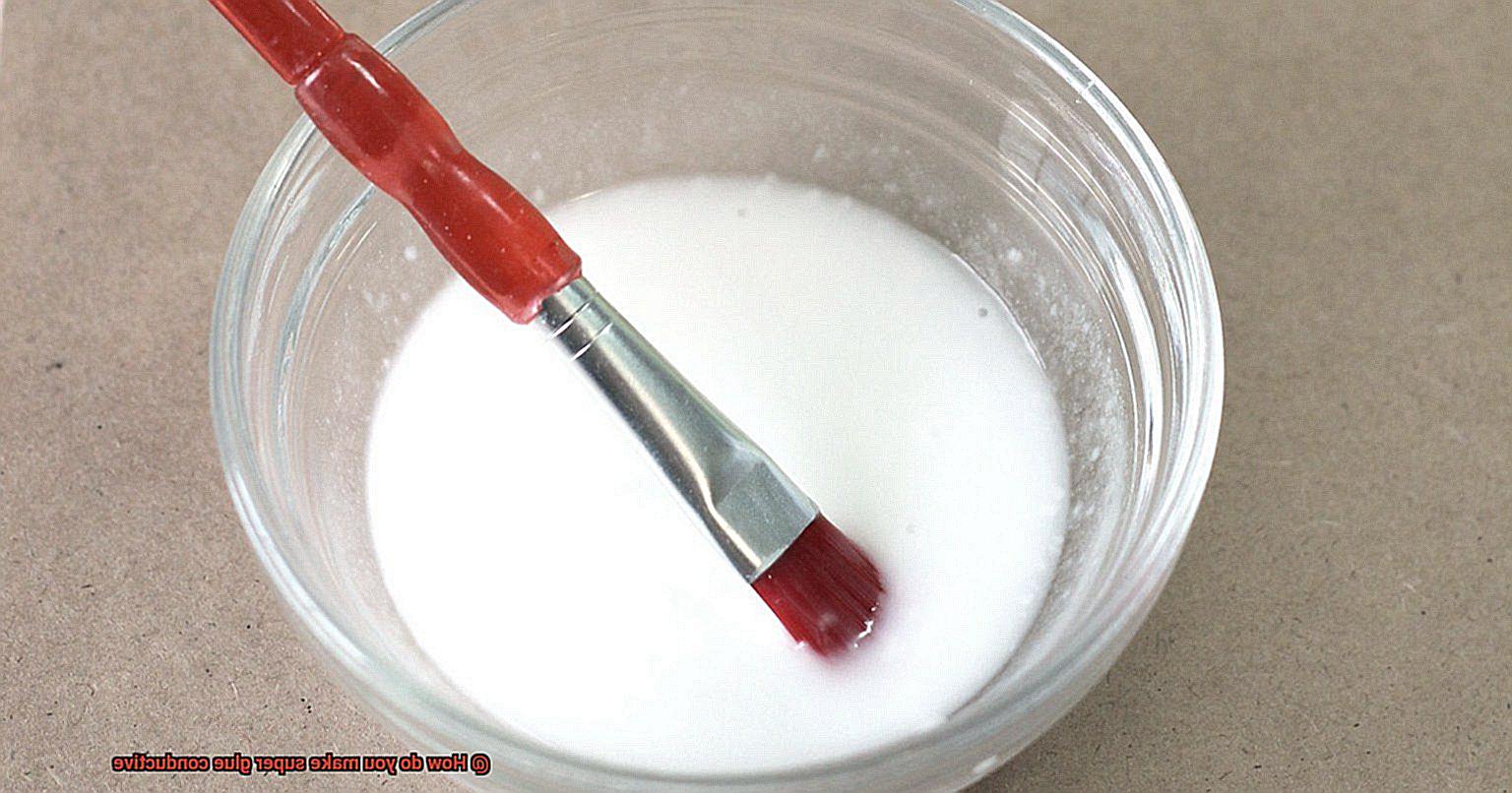
Conductive super glue finds immense value in the medical field for neurostimulation devices, implantable electrodes, and medical sensors. It securely bonds electrodes to the skin or other body tissues, facilitating accurate readings and measurements.
Robotics:
Conductive super glue helps create seamless electrical connections between different robotic components, integrating sensors and actuators to enhance overall functionality.
3D Printing:
Conductive super glue is making waves in 3D printing by creating conductive pathways within printed objects. This allows for the production of functional electronic devices directly from a 3D printer.
Wearable Technology:
Conductive super glue enables the integration of electronic components into fabrics or wearable materials, paving the way for smart clothing and accessories.
Electromagnetic Shielding Applications:
Conductive super glue can be applied to enclosures or structures to create a conductive barrier, shielding sensitive electronic devices from electromagnetic interference.
7iZtOG-eh3w” >
Also Read: How To Make Super Glue Dry Faster
Conclusion
To make super glue conductive, there are a few methods you can try.
One option is to mix it with a conductive material, such as graphite powder or silver particles. This creates a paste-like substance that can be applied to surfaces like wires or circuits.
Another approach is to add a small amount of an electrically conductive liquid, like carbon nanotubes or graphene ink, to the super glue. This allows the adhesive to retain its bonding properties while also becoming conductive.
Whichever method you choose, it’s important to remember that making super glue conductive requires careful handling and proper safety precautions.

